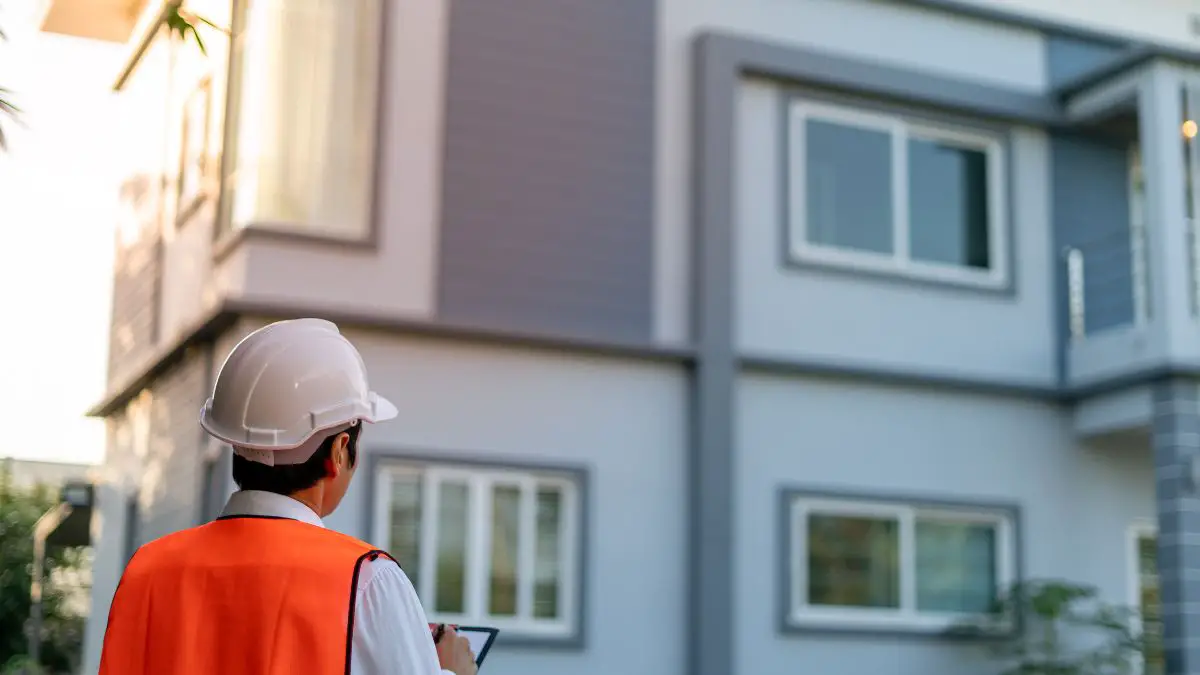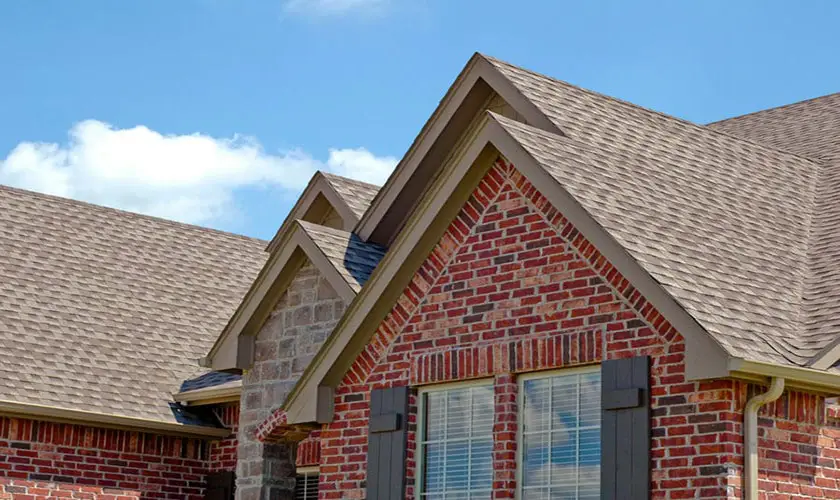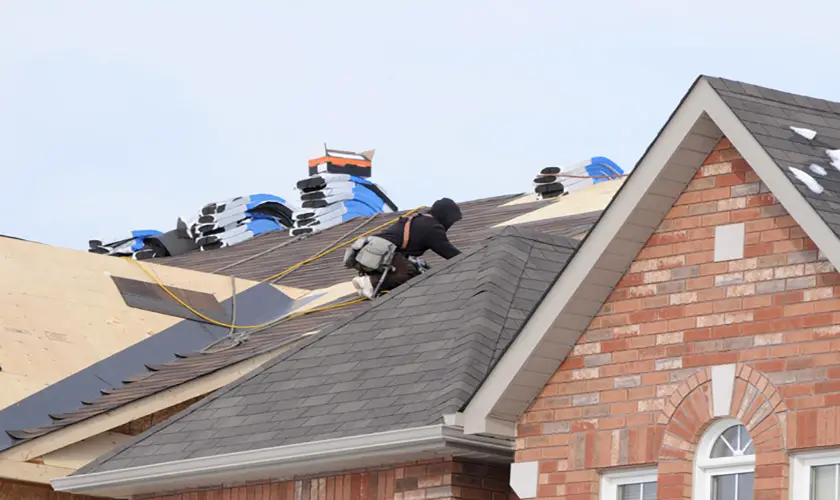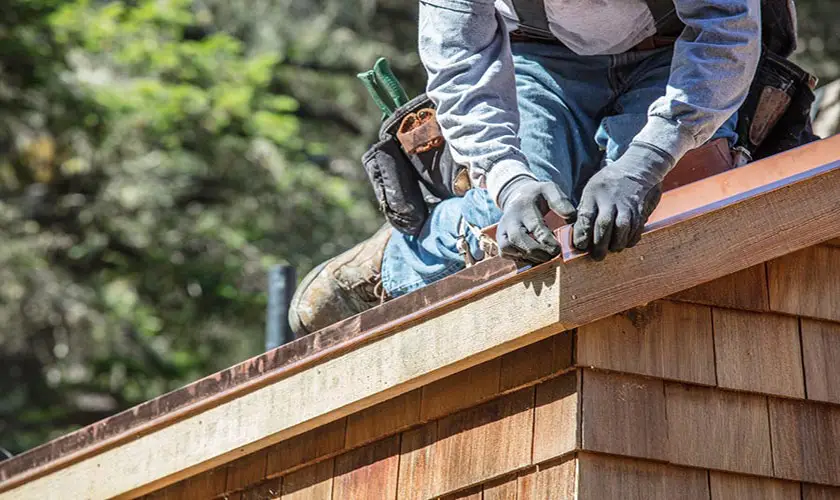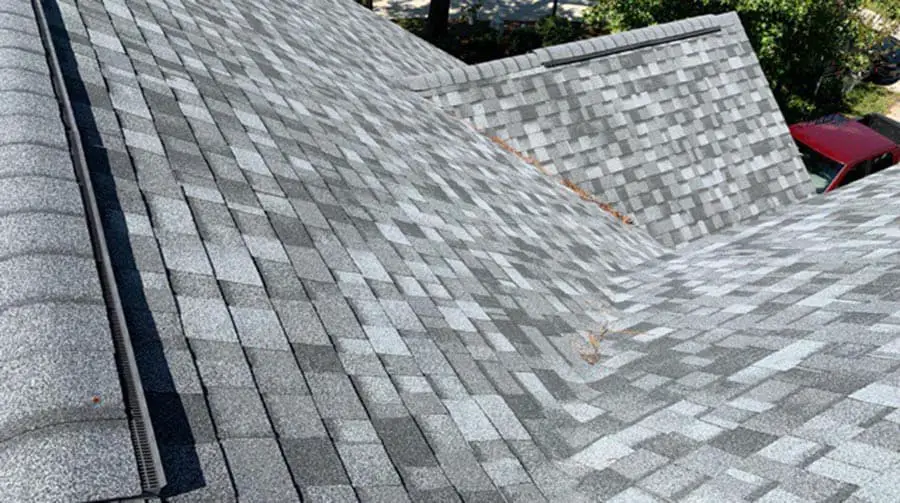
Composition roofing is a composite product that consists of a blend of materials that have been pressed together in different combinations. These materials include slate, wood, fiberglass, asphalt, paper, polyester, plastic, and laminate.
Homeowners consider composite shingles good because they are affordable, sturdy and resistant to weather elements, and attractive. They are also available in a wide variety of designs. Sometimes, the roofing product is referred to as asphalt shingles or composition roofing.
With 80% of single-family homes in America having composite roofing due to its availability, affordability, ease of installation, and low maintenance, it’s worth exploring as a roofing option. There is also the newer version of composition roofing, which is made of plastic or rubber. For that reason, you need to learn everything there is about composition roofing. This article provides a complete guide on the subject.
Are Asphalt Shingles Good?
Asphalt shingles are a common form of composite shingles. They are generally good shingles and have been around for decades. Part of what makes them good is how they’re made which consists of the following layers:
1. The Foundation Layer
Most composite shingles consist of a fiberglass mat, which acts as a foundation upon which other materials are added. The fiberglass mat consists of glass fibers, which are bound together with binders and resins.
The base can also consist of pine, or red cedar wood or recycled paper converted into felt mats. The organic felt mats are created by converting wood cellulose fibers into water-based pulp then processed into rolls. Manufacturers must chemically treat shingles of this kind, so they become fire resistant. However, the fiberglass version offers a higher level of heat resistance.
2. The Asphalt Layer
Composition roofing also consists of asphalt laid onto the foundation of fiberglass or organic felt on both sides. The asphalt is a byproduct of the crude oil refining process and helps make the shingles water-resistant.
In this case, asphalt is oxidized to increase its viscosity to result in a studier material. If the oxidation process is not precise, the asphalt shingle may end up either too brittle or too soft and prone to scuffing.
In addition, the asphalt is fortified with a mineral powder, which may be made of finely ground limestone or fly ash. The powder makes the shingles last longer and even more heat- and weather-resistant.
3. The Stone Granule Layer
Another essential raw material is the stone granules that undergo a ceramic firing process to give them different colors, which last long despite exposure to the elements. These form the topcoat of the composite shingle and consist of crushed hard rock or slag particles.
Some shingles have algae-resistant stone granules, while others have reflective granules that keep away most of the sun’s heat energy. What you get depends on the building codes in your region.
It’s also worth noting that composite shingles usually have a coating of mica particles, sand, or talc at the back. That is done to prevent them from sticking to each other during storage.
A sealant is another material used during the manufacture of shingles. During this process, the shingles are coated with thermoplastic spots or strips. That’s done so that when heated by the sun, the adhesive gets activated and helps the overlapping shingles bond better, thus increasing their wind resistance.
What Is Polymer Composite Roofing?
Polymer composite shingles are usually made of rubber or plastics, which makes them synthetic. Some are made of calcium carbonate and polypropylene. In addition, asphalt, clay, fiber cement, and steel can also be used to make polymer composition roofing.
People sometimes refer to them as synthetic composition or composite roofing. Usually, the blend of materials used depends on the manufacturer.
One of the ways through which these synthetic composite shingles are made is through injection molding petroleum-based raw materials into metal forms. These forms are usually cast from authentic slate.
It’s worth noting that synthetic composite shingles tend to be mold and water-resistant. Many of them are also highly fire-resistant.
Types Of Composition Roofing
When shopping around for composition roofing products, bear in mind that it comes in various forms. Currently, three main types of composite shingles exist. These include:
- Architectural shingles
- 3-Tab shingles
- Premium shingles
1. 3-Tab Shingles
3-Tab shingles are flat composite shingles that are uniform in size and shape. They consist of one layer with three asphalt tabs placed evenly apart along the bottom edge of the shingles, which makes them look like three different pieces of a puzzle when installed.
3-Tab shingles tend to use less material, which makes them lightweight. They are also cheaper, easy to install and repair. Usually, they come with a warranty of about 20-25 years. But their lifespan can be as short as 10 years or less in areas with lots of storms.
However, these kinds of shingles have less resistance to wear and tear, thus get damaged easily. Their thin layer also makes them more likely to be blown off by strong winds.
2. Architectural Shingles
Architectural shingles are multilayered shingles consisting of multiple materials layered over a heavier base. Their three-dimensional nature enables them to hide roofing imperfections better. Furthermore, they can accentuate the roof areas you want to emphasize, such as gables. People also refer to them as laminated or dimensional shingles.
Due to their many layers of materials, dimensional shingles are more resistant to winds and less likely to warp. Thus, they are more robust and can add to the value of your home. But they are also heavier. And compared to their single-layer counterpart, they are more expensive.
However, they usually come with warranties of 30-50 years. In addition, they come in various designs and colors.
3. Premium Shingles
Premium shingles form the third category of composite shingles. They are modified dimensional shingles consisting of two layers of laminated shingles designed to have high resistance to impacts while mimicking other types of attracting roofing options, such as cedar shake or natural slate.
It’s also worth noting that premium shingles also have extra layers making them much heavier and more expensive. So, they are unsuitable for some homes. However, they are the best option for areas that experience climatic issues such as tornadoes, hail, and hurricanes. In addition, you can use them to minimize costs when renovating historic homes where slate or cedar is needed.
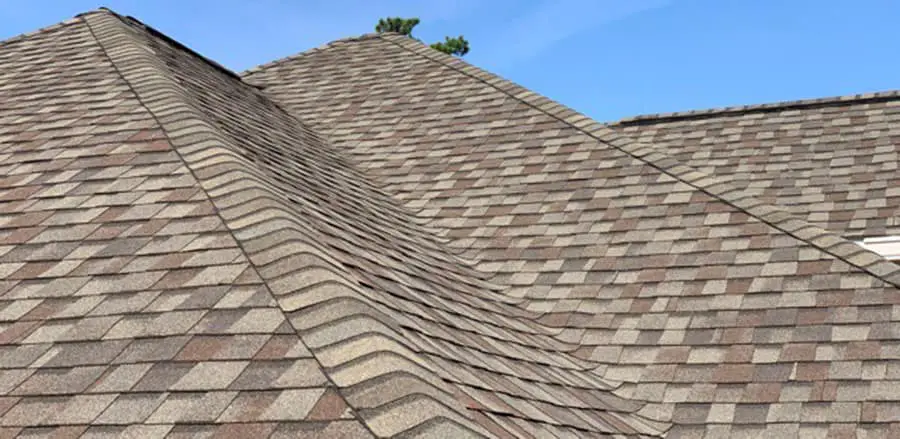
How Many Years Does A Composition Roof Last?
Asphalt composite roofing will typically last anywhere from 15 to 30 years. The 3-tab shingles, which have one layer, will usually last from 15-20 years. On the other hand, architectural shingles can last 20 to 30 years.
While many composite shingles come with warranties ranging from 20-50 years, your roof may not last that long. Other factors also influence the lifespan of your roof.
Your composition roof’s durability could also depend on factors such as:
- The environmental; conditions in the area your home is in.
- Materials that make up your composite roof
- The professional skill of the roofer responsible for the roof installation
- How well you maintain your roof
There are also premium composite shingles, which tend to cost more and last much longer. Their lifespan can range from 25 to 40 years.
As for polymer composite roofing, you can expect to enjoy them for 30 to 50 years, with warranties to match.
How Much Does A Composition Roof Cost?
The average composition roof will cost you $22,060 to cover an average home. Although, composition roofs don’t have a uniform price. That’s because the pricing varies depending on the type of shingle, the location, and the manufacturer.
The price covers both materials and labor costs. Do bear in mind, though, that labor accounts for 60% of the overall price.
However, other factors could influence that price to go as low as 10,100 or as high as 41,850. These include the type and size of your home, roof pitch, the roofing expert’s labor costs, and any additional work that needs doing.
Also, synthetic composite roofing tends to cost more to install compared to asphalt composite shingles. The former costs an average of $9,450, while the latter costs an average of $7,340. So, that’s also something to consider when you are deciding on materials to use.
Depending on the kind and quality of composite shingles you buy, expect to pay anywhere from $110 to $1,600 per square, which will cover about 100 square feet.
Therefore, it’s safe to assume that you would save money installing composite roofing on your own. However, if you make mistakes, you could compromise the roof’s integrity, which would make it less durable and, thus, more costly in the end.
The Benefits Of Composition Roofing
Composition roofing offers plenty of benefits. However, these vary depending on the materials which have been used to create the composite shingles. Below is a breakdown of some of these advantages.
1. It’s Cost-Effective
Composite shingles tend to be cheaper than other kinds of roofing materials. Depending on the type of shingle, expect to pay anywhere from $3.43 to $5.95 per square foot. That is much cheaper than other types of roofing materials, which cost way more.
For example, metal roofing will cost you $6.03 to $24.50 per square foot to install, while tile roofing will cost $6.27 to $12.29 per square foot. Even wooden shakes and shingles are more expensive. You will need to spend an average of at least $6.47 to install them.
Therefore, if you are looking for a roofing solution with low up-front costs, composition roofing is one of the cheapest options around.
2. It’s Relatively Durable
Composition roofs will need to be replaced at different times, depending on various factors. Composition roofs are relatively durable. Their lifespan depends on the manufacturer, the kind of materials used, and the overall quality. For example, polymer composition roofs can last for as long as 50 years without replacement and minimal maintenance.
Other types of composite shingles can last anywhere from 20 to 40 years. The period is decent in comparison to other kinds of roofing, which may be more expensive. For example, wood shingles can last about 30 years, while metallic roofs can last 50 to 100 years. The same applies to concrete and slate roofing. On the other hand, clay tiles can last 40 to 60 years.
So, when you consider the lifespan of composition roofing compared to its upfront costs, it’s worth it.
3. It’s Sturdy
Composition roofing is usually engineered to resist all manner of weather elements to a significant extent. Most types of high-quality composite shingles are sturdy.
Research shows that composition roofing is highly resistant to water penetration. In addition, this roofing solution is highly resistant to wind uplifts and can withstand winds of up to 110mph. Also, high-quality composite shingles usually have a class 4 hail rating. All these features make a composition roof an excellent option for stormy areas of the country.
It’s also worth noting that composition roofing is usually manufactured to be heat resistant. The design construction, which usually consists of asphalt, fiberglass, and ceramic granules, will prevent flames from spreading in a fire.
4. It’s Easy To Install And Replace
Due to the popularity of composition roofing, it is readily available. And many roofing experts are familiar with the roofing solution. As a result, asphalt composite shingles are easy to remove, install, and replace. You won’t have to struggle to find a specialist to replace the roof for you. That said, asphalt roofing is quite DIY-friendly. And when in doubt, there is plenty of advice available online to help you out.
In addition, synthetic composite shingles are easier to install because they have consistent quality and come in various sizes. Also, they are lightweight and can be transported easily from one place to another. That makes them easy to lift and install without worrying about having to reinforce the roof.
5. It’s Energy-Friendly
Depending on the composite shingles you choose, your roofing can reflect away more or less sunlight. So, in sunny areas, you could opt for shingles and colors that absorb less heat from the sun and vice versa. By doing so, you can help improve your home’s energy efficiency and pay less for air conditioning.
6. It Comes In A Wide Variety Of Designs
Curb appeal is the level of attractiveness of your home based on how people view it from the outside. Studies show that a home with plenty of curb appeal will sell at a higher price than one without. For this reason, you need to pay special attention to your roof and how it looks to others.
So, if you want to make your roof stand out without spending too much money, composition roofs are the way to go. They come in various patterns, colors, and textures. They also come in many sizes, weights, and shapes. As a result, you can use composite shingles to enhance the attractiveness of your roof to suit your desires.
7. It’s Low Maintenance
Composition roofing is generally a low-maintenance roofing solution. It doesn’t require much work to keep it in good condition. Most times, it only needs debris clearance and a quick patchwork.
However, it provides excellent traction, making it easy to walk on if you need to do any repairs or install other things, such as skylights. And since it comes with long-term warranties, you don’t have to pay to repair the shingles for the most part. The manufacturer will assume the costs of hiring experts and buying replacement materials for you.
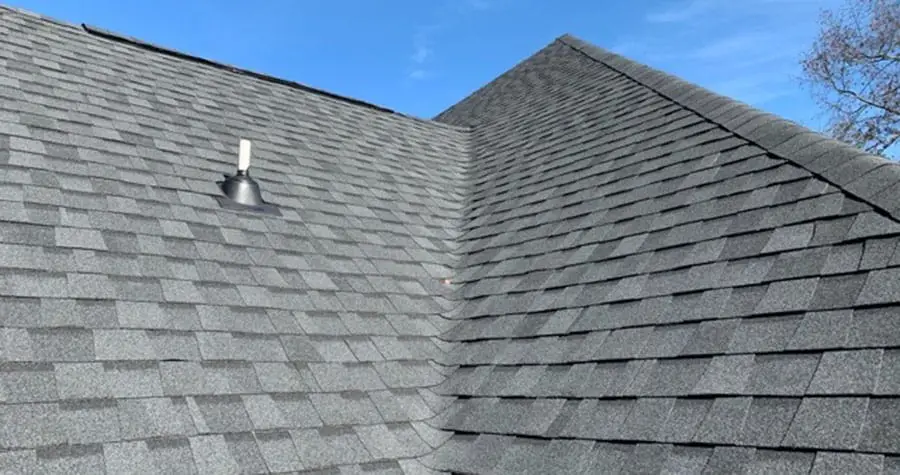
The Disadvantages Of Composition Roofing
While composition roofs offer many benefits, they too have disadvantages. Below are some of them.
1. It’s Not Always Eco-Friendly
Composition roofs that contain asphalt are not very eco-friendly. They contain toxic chemicals that can be released during the recycling process, thus damaging the environment. However, synthetic composite shingles utilize recycled materials such as rubber and plastics and help safeguard the environment by reducing non-biodegradable waste.
2. Easily Damaged By Hard Impacts
While composite shingles can be made to withstand high winds, some don’t always fare so well in case of hard impact. Low-quality shingles, such as the 3-tab shingles, can get easily damaged by falling trees and hailstorms.
3. Shorter Lifespans Than Expected
The standard composition roofing has a shorter lifespan compared to other roofing types such as slate. The weaker shingle types are vulnerable to weather elements. And their lifespan can also be compromised by the internal ventilation of the home. Also, excess exposure to the sun can make the shingles break down much faster.
Final Thoughts
Composition roofs are popular for a reason. Their decent durability, low cost, and ready availability make them an excellent option for homeowners with a small roofing budget. That said, they can get damaged faster than you anticipated and pose a threat to the environment due to the materials used to make them. So, pay close attention to what a home inspector tells you about the state of your composition roofing, and then do the math before deciding on your roof replacement.



